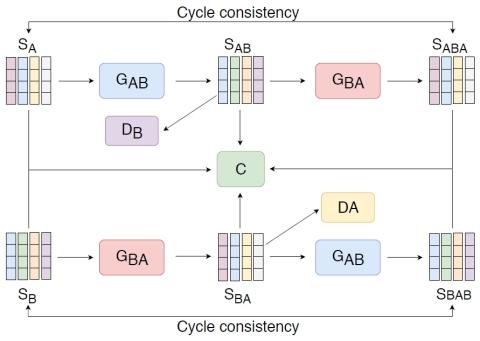Emotional Voice Conversion, or emotional VC, is a technique of converting speech from one emotion state into another one, keeping the basic linguistic information and speaker identity. Previous approaches for emotional VC need parallel data and use dynamic time warping (DTW) method to temporally align the source-target speech parameters. These approaches often define a minimum generation loss as the objective function, such as L1 or L2 loss, to learn model parameters. Recently, cycle-consistent generative adversarial networks (CycleGAN) have been used successfully for non-parallel VC. This paper investigates the efficacy of using CycleGAN for emotional VC tasks. Rather than attempting to learn a mapping between parallel training data using a frame-to-frame minimum generation loss, the CycleGAN uses two discriminators and one classifier to guide the learning process, where the discriminators aim to differentiate between the natural and converted speech and the classifier aims to classify the underlying emotion from the natural and converted speech. The training process of the CycleGAN models randomly pairs source-target speech parameters, without any temporal alignment operation. The objective and subjective evaluation results confirm the effectiveness of using CycleGAN models for emotional VC. The non-parallel training for a CycleGAN indicates its potential for non-parallel emotional VC.
Conclusions
This paper investigates the efficacy of using CycleGAN for emotional VC tasks. Rather than attempting to learn a mapping between parallel training data using a frame-to-frame minimum generation loss, the CycleGAN uses two discriminators and one classifier to guide the learning process, where the discriminators aim to differentiate between the natural and converted speech and the classifier aims to classify the underlying emotion from the natural and converted speech. The training process of the CycleGAN models randomly pairs source-target speech parameters, thus DTW process is not needed. The objective and subjective evaluation results confirm the effectiveness of using CycleGAN models for emotional VC. To sum up, the advantages offered by the CycleGAN model include (i) utilizing GAN loss instead of minimum generation loss, (ii) getting rid of source-target alignment errors and (iii) flexible non-parallel training, etc. The non-parallel training process also indicates the potential to use non-parallel emotional speech data for developing emotional VC systems, which will be our future work.

